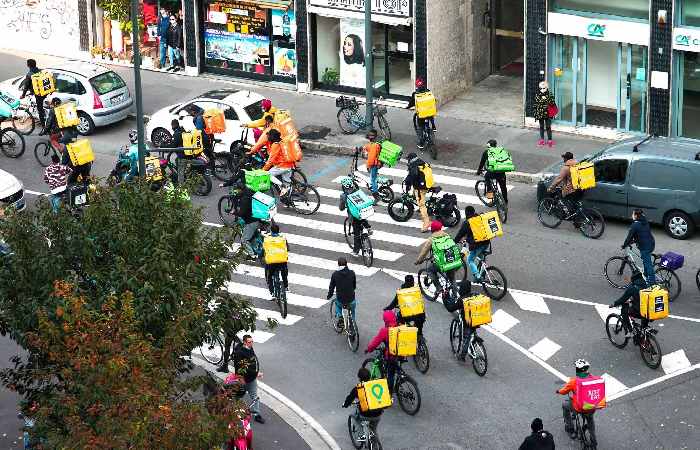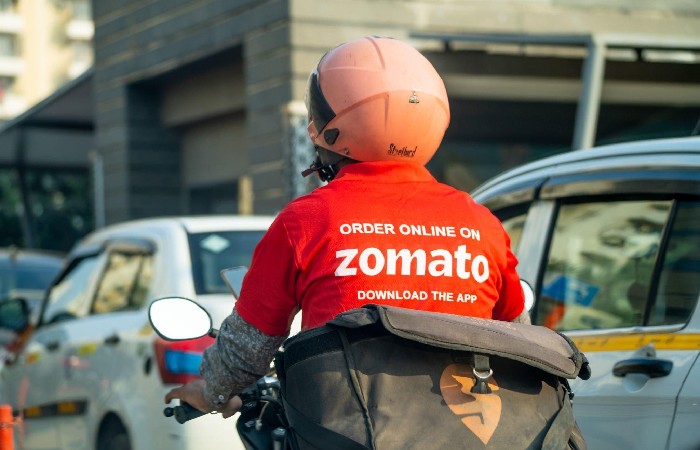Uber, an American mobility service provider, built in San Francisco, exercises significant global control over ridesharing and ridesharing. And its 2014 grocery delivery spin-off, UberEats, now operates in dozens of countries. UberEats controls more than 29% of the worldwide food delivery marketplace and has more than 66 million users.
UberEats is then successful in the international food delivery market and backed by global venture capital funds but has failed to expand its operations in the Indian subcontinent. In India, Uber sold its business to local grocer Zomato in an all-stock deal in early 2020 for $300-$350 million.
Uber, A Demanding Market
The food delivery industry continues to choke startups with every fulfilled order. With an average order price of Rs 300, ordering and delivery apps charge 10% to 15% of the cost and a delivery fee of around Rs 50. So a customer has to pay Rs 390 when ordering through an app for food delivery while he only has to pay the price for a meal in a restaurant of 300 rupees.
Further proof of the challenge of the food delivery market is the case of Ola, the best taxi service in India. Ola has entered the food delivery segment in India twice but debuts shortly after that. The second time in 2018, with the acquisition of its German parent company, Delivery Hero by Foodpanda, closed again shortly after that. After that. 2019. Ola has a much broader market penetration in India, with a presence in 102 cities compared to Uber’s 29 cities. But has not made a smooth transition into the grocery delivery business.
A businessman quoted in this regard said: “The food delivery business is not profitable for anyone, so companies are trying to expand into other activities and services. Control Swiggy to start Swiggy Homely, groceries, and spike deliveries with Swiggy stores. While Zomato has hosted other companies from advertising, Zomato has gold, etc.”.
The Case Of Uber Eats
Uber Eats generated revenue of more than $4.8 billion in 2020. Even in 2020, when Uber’s hospitality operation was banned due to COVID-19 and revenue fell 50% year over year, Uber Eats has become a staple to support the business. Since the second quarter of 2020, Uber Eats has generated more revenue from its hospitality platform. The horse-calling platform has performed strongly in the post-pandemic world, generating $4.84 billion in the last year.
According to industry watchers, Uber Eats arrived in the Indian market in late 2017, albeit with a significant upside. Their equestrian services established the Indian market, and they had quite a good clientele. But somehow, it failed to attract discount-seeking Indian clientele.
Swiggy COO Vivek Sunder said in his public statement that Uber Eats is a great brand and organization. But it has suffered from being a global company because global companies have significant size, capabilities, and access to capital. For multinational companies, local changes require validation by their global headquarters, which can take time and eventually abandon. In contrast, Indian companies can quickly adapt their operations to changing markets.
A grocery delivery service earns primarily from markups, revenue sharing, advertising, and promotional services. Although they generate substantial revenue, profits are minimal. However, in India, the profit margins are low compared to the world market, and the companies are not performing well and constantly need new funds to continue their services.
Despite being an international giant and Eats, successful tactics on the subcontinent haven’t clicked. Industry insiders estimated the profound rebates behind Eats were eroding, resulting in a $292.97 million operating loss followed by more debt and a tough market.
First Mover Advantage For Swiggy And Zomato
The giant incumbents, Zomato and Swiggy, had switched to users’ phones and had already gained considerable control of the grocery delivery market by Eats, launched in 2017. In addition. Most of the restaurants are already listed on Zomato and Swiggy.
While Eats had a delayed disadvantage, eats relied on deep discounts to attract and retain customers; It didn’t play very well. The motive to entice a high volume of app transfers and settle for a lower margin did not entice merchants to sign up for the app. Customers continued to profit from these strategies, but traders sank into losses.
The incumbents had more focus, expenditure power, and aggressive commercial expansion than Eats. With profits dwindling and losses mounting, international investors have pressured Uber Eats to exit the subcontinent’s grocery ordering and delivery business.
Lack Of Separate Identity In Uber
Swiggy was launched in 2014 and Zomato in 2008. Still, Swiggy offered a better app user experience and a stronger focus on delivery, which differentiated Swiggy from Zomato and helped Swiggy quickly reach Marlet’s threshold. However, Uber Eats was no different from its competitors, lacking a clear identity. Eats was already a late pitcher. It had become difficult to sustain the grocery delivery market without product differentiation.
Additionally. Uber Eats launched with a lot of fanfare, and Uber wasn’t as focused on its food deliveries as it should have been. Market insiders believe Eats has relied solely on its international support and parent company. And Uber Tech should have launched the meal delivery business under a different brand.

![Why Can’t Uber Eat Deliver To India? [2024]](https://www.treasurebiz.com/wp-content/uploads/2022/04/Uber-Eats.webp)